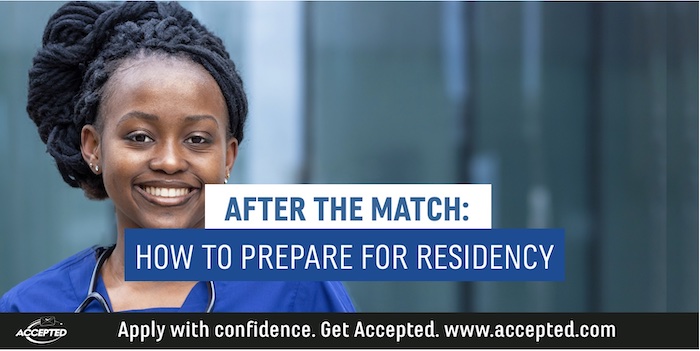After the Match: How to Prepare for Residency

This past Friday, thousands of medical students across the US (and the world) discovered where they will be living and working for the next 3-6 years. And now, with less than four months of planning, these newly minted physicians are expected to move to new cities, find housing, gain licensure, and be ready to hit the ground running starting July 1st. Although it sounds overwhelming, a little extra work now can go a long way to making a smooth transition. Here’s some advice for starting residency on the right foot!
Where are you going to live?
For many medical students, this will be the first opportunity to actually purchase their own home. If your residency is more than three or four years, I’d recommend considering purchasing a house instead of renting. Keep in mind, once your residency begins, it will be exceptionally difficult to move to a new apartment or home, so take your time deciding where you want to live, including your commute and traffic in your new city.
Many banks offer Physician Loans, including zero down and low interest options. Contact your current bank, and do some research online or with a personal financial advisor before making any decisions. There are some great resources online, including WhiteCoatInvestor.com, which was started by an emergency medicine physician (be aware there are many banks who pay sites for referrals). Regardless of what you choose, start soon as the process (especially for a mortgage) can be very time consuming!
You look too young to be a doctor…
Most residency programs will email or mail you a long list of requirements for you to complete after match day. If not, or you’d like to get a head start, find your state’s medical board and download the licensing application. Many states require in-person fingerprints, so if you’re going to visit to look for housing, make sure you knock this out at the same time. Again, earlier is better than later; thousands of new graduates are going through the exact same process, and your first few months will go a lot smoother if your NPI and DEA numbers are ready. Plus, then you can flash your shiny new badge when patients ask when they will see “a doctor.”
Wait… When do we need to be there?
If you’re planning a post-graduation vacation, make sure you know what day you officially start your residency. Even though many programs begin July 1st, you are usually expected to be there June 15th or earlier for orientation. Some programs, like my fiancée’s, even required she begin working on June 15th, with an even earlier orientation. Make sure you don’t show up two weeks late because you were on a Caribbean island drinking Mai Tais.
Meet and Greet
Get to know your co-residents, especially your co-interns! You will be spending years of your life with these people; stressed out, over worked, and sleep deprived–having friends to share it with makes everything better. Set-up a group chat, Facebook group, or email chain with your new classmates and try to get together and help each other out navigating your orientation materials and licensing paperwork. Having a strong relationship with your class will not only help each individual out, but will strengthen patient care.
Enjoy it!
Transitioning to residency is almost as stressful as Step 1, but it’s also exciting. Enjoy the rest of your fourth year, celebrate your graduation (take lots of photos!) and spend time with your family and friends. Make time to do the things you’ve been putting off for the past four years and come into residency relaxed, refreshed and ready for the challenges ahead. Congratulations on matching!
[xyz-ihs snippet=”MED—SR—5-FF-Residency”]
Evan Kuhl is a PGY-1 emergency medicine resident at The George Washington University in Washington, DC. Evan is interested in the intersection of sports and medicine, and is an avid cyclist. His website, www.evankuhl.com, includes helpful tips for pre-med and current medical students.
Related Resources:
• A Residency Admissions Tip for Third-Year Medical Students
• How To Successfully Couples Match
• What Med School Applicants Need to Know About Residency Match

